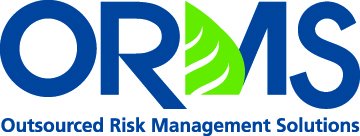What’s “Green” About the Inflation Reduction Act of 2022?
Small Business Drives the U.S. Economy. It’s Our Job to Keep it That Way.
August 25, 2022Plan Ahead to Avoid Environmental Headaches in Foreclosure
December 1, 2022What’s “Green” About the Inflation Reduction Act of 2022?
The Inflation Reduction Act of 2022, passed by Congress and signed by President Biden on August 16, 2022, is a broad piece of legislation seemingly offering something for everyone: a promise of lower prescription drug prices, health care costs and energy costs, with a stated (some may say dubious) goal of slowing down the runaway inflation rates of the past year.
Much has been made of the months-long negotiations among the Democratic caucus to get this slimmer version of Biden’s “Build Back Better” program across the finish line. Less understood are the implications of the Act’s numerous environmental initiatives including investments in green loans, tax credits and other incentives. Taken together, the “green” piece of the legislation will cost taxpayers an estimated $370 billion, representing the most ambitious and expensive attempt at combatting climate change in our nation’s history.
Climate takes center stage
According to the White House, the Inflation Reduction Act’s clean energy provisions are aimed at achieving on three broad goals: to lower energy costs, build a clean energy economy, and reduce harmful pollution and carbon emissions that accelerate climate change.
To tackle these ambitious objectives, the law includes a number of new, extended and expanded programs:
- $14,000 in direct consumer rebates for families to buy heat pumps or other energy-efficient home appliances, which is projected to save families at least $350 per year.
- A 30% tax credit for homeowners to install solar panels on their roofs. The White House projects this allow 7.5 million more families to install solar, saving at least $300 per year per household
- Up to $7,500 in tax credits for new electric vehicles and $4,000 for used electric vehicles, helping families save $950 per year.
- Up to $350 billion in additional federal loans and loan guarantees for energy and automotive projects and businesses, to be disbursed by the Energy Department. This figure includes $80 billion in loans that were already applied for prior to the new law being approved, an additional $100 billion for existing loan programs for financing the production of electric vehicles and projects on tribal lands, and up to $250 billion in new loan guarantees.
In addition to these provisions, the Act has also earmarked $27 billion for a Greenhouse Gas Reduction Fund (GGRF) to provide low-cost financing through national or local green banks. The green bank program was first proposed in 2009, and today there are 21 green banks in the U.S., in states including California, New York, Maryland, Rhode Island and Hawaii.
The law has designated $20 billion for state and federal green bank funding to provide direct investments (including private sector partners) to reduce greenhouse gas emissions. $7 billion of that figure is specifically set aside to support green technology projects and emission reduction in low-income and disadvantaged communities.
The establishment of the GGRF also required an amendment to the Clean Air Act, which was done within the Inflation Reduction Act. The federal government’s additional investment in green banks is likely to expand the number of such institutions around the country.
Together, independent groups are projecting the climate provisions in the new law will help reduce greenhouse gas emissions by 40% from 2005 levels by 2030, a major step toward attaining President Biden’s climate change goals.
What about green loans?
With the passage of the Inflation Reduction Act, there is renewed interest in so-called “green loans.”
These loans are currently offered by numerous lending institutions, including regional and community banks and credit unions (like Clean Energy Federal Credit Union, Heritage Family Credit Union, and Alpine Bank) alongside neo-banks and specialty lenders like SoFi, UpStart and Lightstream.
Green loans started as a program designed to help consumers and businesses reduce their CO2 emissions by providing low-cost home improvement and renovation projects, and have since expanded to offering products to finance the purchase of electric and plug-in hybrid vehicles, solar and geothermal upgrades, and so-called green mortgages.
Green loans are an excellent way for lenders to meet their environmental, social and governance (ESG) objectives. For those lenders that are considering moving into this space, it doesn’t have to be a heavy lift. In fact, a successful program can easily leverage your current loan offerings, like mortgages, home equity loans and personal loans. However, there are a few things you should take into consideration before launching a green lending program.
First, do your due diligence! Make sure you understand all the regulations and requirements around these specialty loans, including your responsibilities as a lender to track outputs and qualifications.
Next, set up a way of tracking your borrowers’ compliance with green lending requirements. This is especially critical in more complex loan types, like residential mortgages, where the lender will likely need to ensure the building is meeting carbon footprint reduction requirements as measured by such metrics as energy consumption.
Lastly, don’t try to do it on your own! Certain third-party risk management consultants like ORMS have experience in working with lenders that offer green loans and other specialty lending programs, and are available to share their expertise to help you get on the fast track to success.
ORMS works with several banks, credit unions and other lenders that offer green loan programs, and our staff is prepared to support our clients with due diligence and program management. If you are looking to explore this exciting area of lending, or need to shore up your risk management and due diligence operations, don’t hesitate to contact us today.
